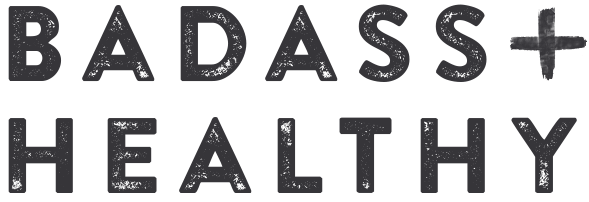Break the cycle of old patterns to find true fulfillment.
“Awareness is the precursor to healing,” says psychologist Carder Stout, PhD, MFT, of Los Angeles Depth Psychotherapy.
Read that a few times and let it sink in. It can certainly apply to physical healing, too, but in this instance, Stout, a renowned “psychologist to the stars” and recovering addict, means an awareness of yourself, your thought patterns, habits and emotions.
To help patients get unstuck from repetitive patterns of behavior that do not serve them, Stout often incorporates five universal archetypes, based on famed Swiss psychiatrist Carl Jung’s Theory of Archetypes, into his counseling sessions. Discovering your archetype can open up awareness and, with the right tools, lead you to break free of old patterns and to a more fulfilling life.
What Is an Archetype?
Generally speaking, an archetype is an example of a certain person or thing; an original that has been imitated.
“Once we begin [subconsciously] identifying with a certain archetype, we can take on its characteristics and not realize it, and it becomes fused with our personality. The archetype can then become a dominant force that is capable of doing considerable harm until we face the life lessons it is attempting to offer us,” Stout explains.
Which Universal Archetype Do You Identify With the Most?
According to Stout, there are five universal archetypes: the Puella/Puer (or Girl/Boy), the Victim, the Fighter, the Savior and the Martyr. As you read a summary of each one below, see whose characteristics resonate.
The five universal Archetypes:
The Girl/Boy (Puella/Puer)
The Girl/Boy, or Puella/Puer, archetype is the person who has a little boy or girl inside who doesn’t want to grow up. Fun loving, stylish, audacious and often artistic, on the outside, they’re playing. They are dreamers and often have a hard time transitioning into adulthood.
The Victim
The Victim archetype is the person who feels like they are constantly being persecuted and unfairly treated. They develop this idea that perhaps they’re unworthy of good things in their life and can be jealous of those who are more fortunate. They often compare themselves to others.
The Martyr
The Martyr archetype is the person who feels as though their opinion and voice needs to be heard. They want to change the world and often are full of a sense that they have to take on the responsibility because nobody else can do it. They have a difficult time finding humility and are full of devotion and fervor. They usually find a cause that is anti-mainstream or anti-establishment.
The Savior
The Savior archetype is the person who is generous, sympathetic and consistently finds a way to be involved in other people’s lives and crises that they go through. They are driven by compassion and justice, oftentimes led by their own trauma and use focusing on the lives of others as a way to escape rather than focusing on themselves. They make reliable friends and partners but their happiness can be fleeting, as it is usually dependent upon sacrificing themselves and their own needs.
The Fighter
The Fighter archetype is the person who is defiant, passionate and vocal about what they believe in. They enjoy conflict and confrontation, and persist in difficult times. They will try and enlist you in whatever cause and fight they are joining. No matter what the odds, they will go to any length to try and overcome whatever it is that stands in their way.
How Do You Know Which One Is You?
They might all resonate with you to some extent because you are a dynamic being that shares in the experiences of life with others. That said, there’s probably one or a combination of two of these archetypes that (even if you don’t really like it) sounds most like you or how you tend to act. If you’re totally not sure, have a close friend or family member read the descriptions. They’ll likely be able to tell you which one you are if you don’t see it… Be open to it.
Why Should We Care About Universal Archetypes?
When humans come into this world, we haven’t yet experienced the pain, loss, confusion, disappointments, parenting, relationships and more—“real life”—that can create everything from simple blind spots all the way to highly toxic behavioral patterns. It might be difficult for loved ones to shine a spotlight on these patterns for fear of argument, hurt feelings or denial. It might be difficult for an individual to work on or try to heal them for fear of pain or discomfort, or lacking the tools to do so solo. Holding onto the story you identify with could feel easier than trying to change the narrative.
Stout has seen firsthand through his work and training that you can do it, just as he himself has as a recovering addict. He says to his patients, “What are the patterns? It seems like you are in this type of mood repetitively. This is not something you’re going through alone, a lot of people feel this way and there are reasons for this, but I want you to know that this is an archetypal story and you are not the archetype that is possessing you right now. Underneath the story you have created for yourself, you are a sensitive, kind, loving, generous soul.”
Remember: Awareness is the precursor to healing.
How Can You Distinguish Between the True Voice of Your Soul and Your Archetype/Ego?
When you are feeling a sense of peace, love, calm, curiosity, optimism, expansiveness, then you are operating from a soul perspective. When you are full of fear and feeling confused, insecure, shameful or angry, you are operating from the perspective of the ego.
May the peace be with you.
Read More on Badass + Healthy:
3 Ways to Have Your Sober Friend’s Back
What Does Eating for Your Genes Mean?
An Honest Review of Tracy Anderson Online

